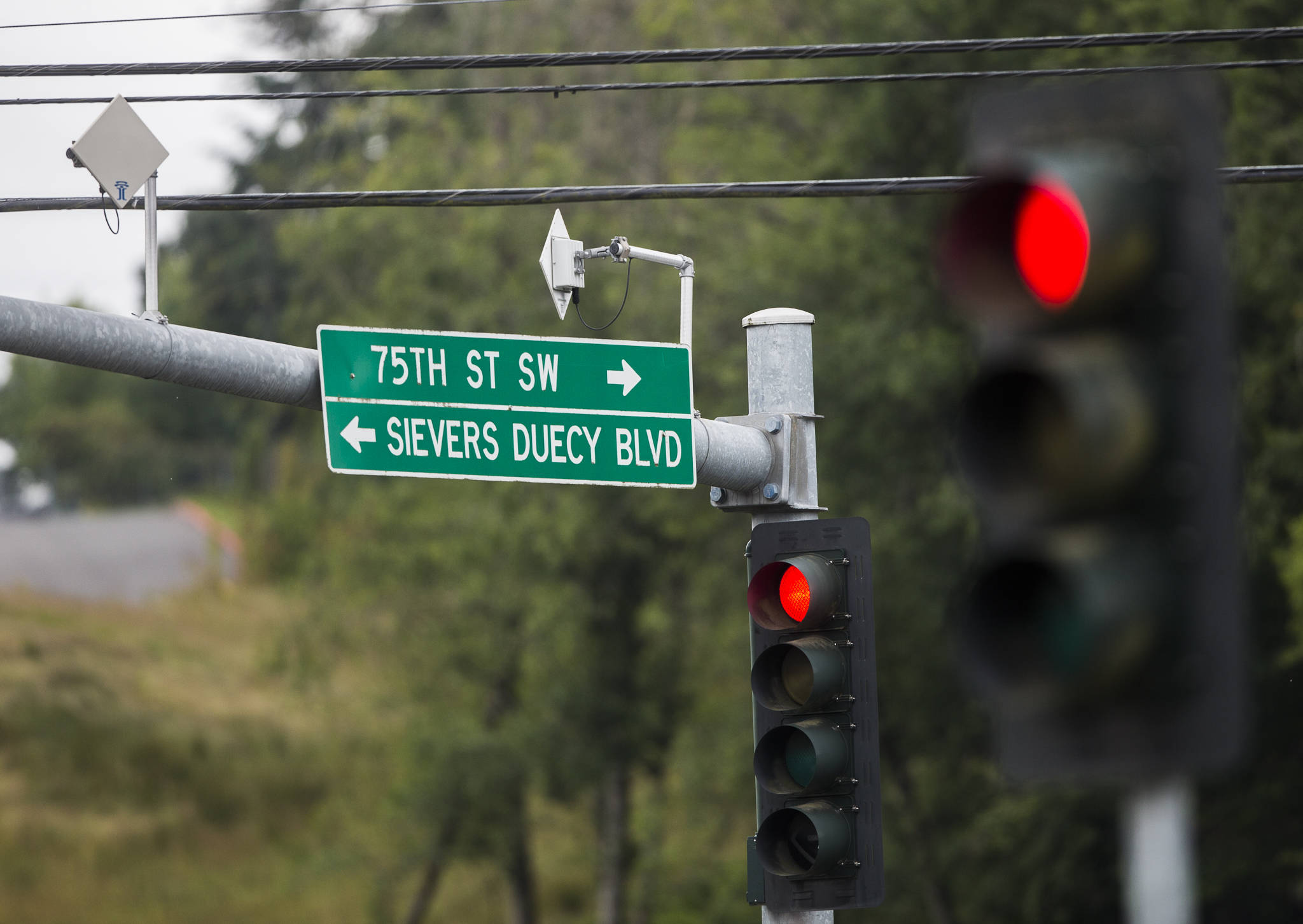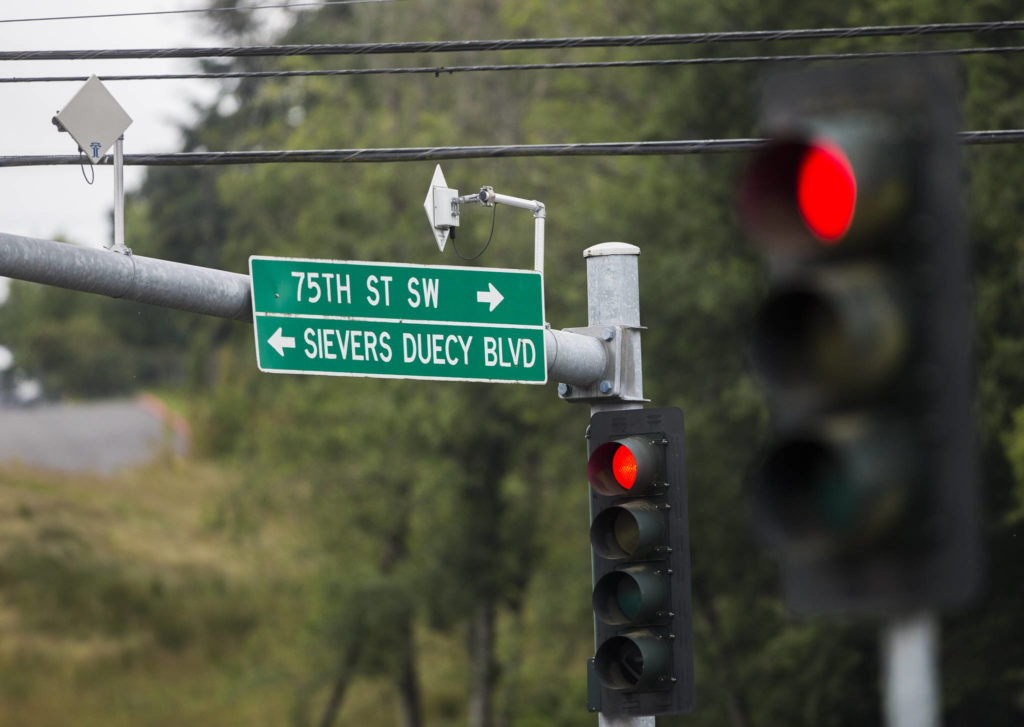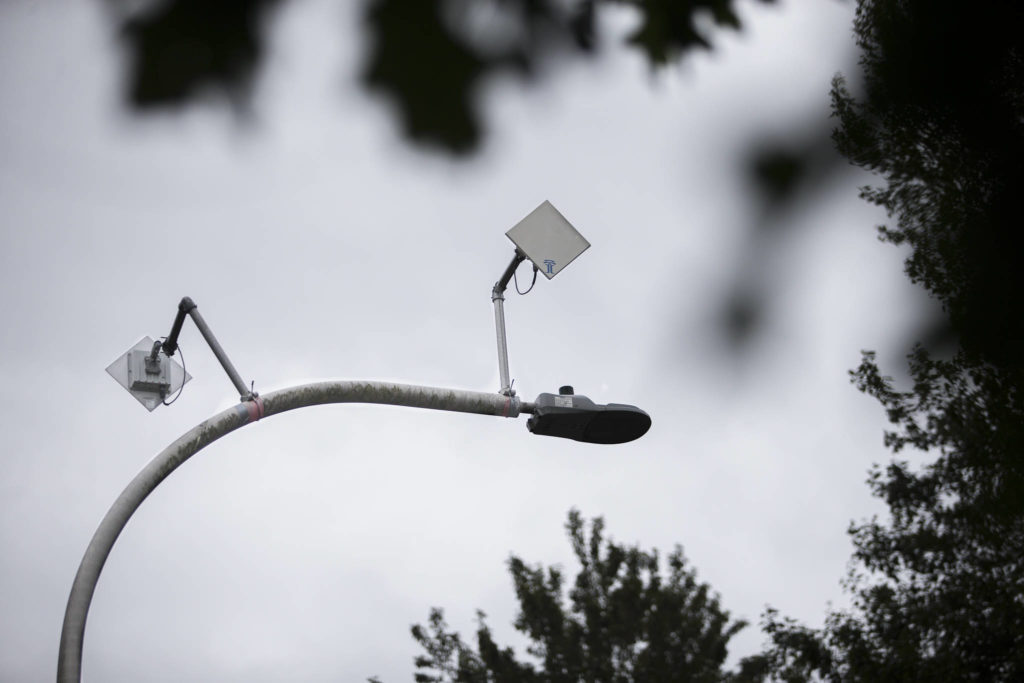When you drive, ride or stroll the same streets day after day, you start to notice minute details during the journey.
A home’s new paint color (shoutout to all the brave souls going for pastels in the year 2020). More cars parked curbside. That neighborhood commercial space up for lease again. The neighbor’s new boat.
But only the eagle eyed and truly curious gaze up enough to notice things that would have had George Orwell rending his clothes and hair in disgust.
“I’ve been puzzled the last couple years by just what this thing is that is attached to a street light pole a couple blocks away from my house,” said Fabian Borowiecki, who lives in Everett. “I’ve since noticed more scattered around the city on either light poles or traffic signal poles. It appears to be wired in to the poles it is on, so is it some kind of traffic counter maybe? Or something to do with Everett Transit buses since there is a bus stop at the light pole? You have any idea?”
As with most things, I had absolutely no idea. I’d never even noticed them before.
Borowiecki said he spied the devices in the Hardeson Road area, near the Community Transit headquarters and a Funko warehouse. He thought that maybe they were related to buses, but that didn’t scan when he never noticed any on Casino Road or Evergreen Way, both major public transit streets. Neither did his hypothesis that they were for commercial freight, since there are so many semis using that area near Sievers Duecy Boulevard.
The devices are wireless antennas/radios that provide Ethernet communication between Everett’s traffic signal cabinets in southwest Everett near the Seaway Transit Center back to the Traffic Management Center, traffic engineer Euneka Richards said in an email.
The city uses fiber optics, copper and wireless equipment for its Ethernet (essentially a local area network, as opposed to the Internet) communication to the traffic center. Everett prefers an underground conduit, like fiber optics.
“However, if we don’t have a continuous conduit pathway, then we will use wireless communication instead, which we did when establishing communications between the new signal at the Seaway Transit Center and our (traffic management center),” Richards said. “The communication network provides access to our central signal system, emergency vehicle preemption monitoring system and traffic monitoring cameras for more efficient traffic signal operations.”
That’s how traffic signals suddenly change out of order when EMS, fire or police vehicles come through with their sirens and lights on. And that’s something we should all pay attention to like it’s our neighbor’s home’s new orange paint.
Have a question? Email streetsmarts@heraldnet.com. Please include your first and last name and city of residence.
Talk to us
> Give us your news tips.
> Send us a letter to the editor.
> More Herald contact information.



























